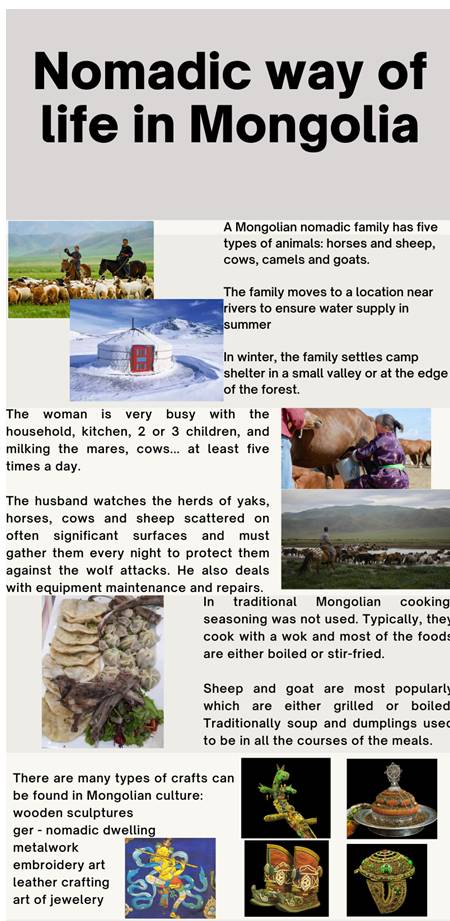Hãy nhập câu hỏi của bạn vào đây, nếu là tài khoản VIP, bạn sẽ được ưu tiên trả lời.

1. Apsara dance/ a form/ Cambodian classical dance.
=> Apsara dance is a form of the Cambodian classical dance
2. It/ known/ Cambodian Royal Ballet.
It's known for Cambodian Royal Ballet
3. The Apsara/ performed/ a woman/ a traditional dress.
The Apsara performed a woman with a traditional dress.
4. The dance/ use/ gestures/ tell myths/ or religious stories.
The dance uses gestures to tell myths or religious stories
5. It/ have/ a soft movement/ loudly traditional Khmer music/ during its performance.
It has a soft movement and loudly traditional Khmer music during its performance
6. Apsara dance/ not require/ physical ability/ but/ it/ require/ smooth movement.
Apsara dance does not require that physical ability but it requires the smooth movement.

Tại vì đây là một câu passive (câu bị động)
Trong trường hợp này, câu có nghĩa là "Nó đc biểu diễn..." chứ ko phải "Nó biểu diễn..."
(mình ko giỏi về mấy dụ giải thích nhưng mong bạn hiểu đc =))))

I . Thêm từ
1. My mother/like/watch/folk music/news/VTV1 channel.
My mother likes watching folk music and news on VTV1 channel
2. Apsara dance/ a form/ Cambodian classical dance.
Apsara dance is a form of Cambodian classical dance
3. It/ known / Cambodian Royal Ballet.
It is known as Cambodian Royal Ballet
4. The Apsara/ performed / a woman / a traditional dress .
The Aspara performed a woman with a traditional dress
5. The dance / use / gestures / tell myths / or religious stories .
The dance uses gestures to tell myths or religious stories
6. It / have / a soft movement / loudly tradition Khmer music / during its performance .
It has a soft movement and loudly tradition Khmer music during its peformance
7. Apsara dance / not require / physical ability / but / it / require / smooth movement .
Apsara dance does not require physical ability but it requires smooth movement
II . Viết lại đoạn văn .
The Giong Festival/held/the 6th / the 12th / the 4th lunar month / Soc Son , Ha Noi . The festival / commemorate / Saint Giong / who / defeat / the An . The festival/provide/ many entertaining activities / including / folk games / traditional singing performances . The festival / recognized / UNESCO / as an intangible heritage / mankind.
Giong festival is held from the 6th to the 12th of 4th lunar month in Soc Son, Ha Noi. The festival commemorates Saint Giong who defeated the An. The festival provides many entertaining activities including folk games and traditional singing performances. The festival is recognized by UNESCO as an intangible heritage of mankind

1,
Everyday life: The life of Mongolian is punctuated by caring animals. A Mongolian nomadic family has five types of animals: horses and sheep for hot season and cows, camels and goats for cold season.
Several times during the year, according to the needs of livestock and pasture conditions, nomadic families move their yurts.
In summer, the nomadic family will favor a location near a river, to ensure water supply for the family and herds, and good pastures.
In winter, the priority is given to protection against the intense cold of Mongolian winter, and the family settles its "winter" camp sheltered from the wind in a small valley or at the edge of a forest.
The woman is very busy with the household, kitchen, 2 or 3 children, and milking the mares, cows... at least five times a day.
The husband watches the herds of yaks, horses, cows and sheep scattered on often significant surfaces and must gather them every night to protect them against the wolf attacks, frequent in Mongolia.
He also deals with equipment maintenance and repairs.
Ways of cooking: In traditional Mongolian cooking, seasoning was not used; although salt was there a long time and it is used it even in tea! Typically, they cook with a wok and most of the foods are either boiled or stir-fried.
Since a lot of livestock is raised in Mongolia, it is no mystery that Mongolian cuisine revolves around them. Sheep and goat are most popularly which are either grilled or boiled. Traditionally soup and dumplings used to be in all the courses of the meals, without which, it was regarded to be incomplete.
There are many types of crafts can be found in Mongolian culture: wooden sculptures, ger - nomadic dwelling, metalwork, embroidery art, leather crafting, art of jewelery.
The traditional masterpiece of Mongolian is the urtyn duu accompanied with the morin-khurr. Most famous Mongolian dance are: Jinai dance (milking dance), the Caihong dance (rainbow dance), the Zhongwan dance (bowl dance), the Kuaizi dance (chopsticks dance), and the Andai dance
There are lots of festival in Mongolia but these are the most well-known one: Tsagaan Sar (Lunar New Year); Khovsgol Ice Festival; Naadam Festival; Gongoriin Bombani Hural; Ölgii Eagle Festival.
2,

3,
Hello everyone, today our group will introduce the nomadic way of life in Mongolia. The life of Mongolian family depends on the healths of herds and is punctuated by caring for animals.
Traditionally, a Mongolian nomadic family has five types of animals: horses and sheep, cows / yaks, camels and goats.
Several times during the year, according to the needs of livestock and pasture conditions, nomadic families move their yurts.
In summer, the nomadic family will favor a location near a river, to ensure water supply for the family and herds, and good pastures.
In winter, the priority is given to protection against the intense cold of Mongolian winter, and the family settles its "winter" camp sheltered from the wind in a small valley or at the edge of a forest.
The woman is very busy with the household, kitchen, 2 or 3 children, and milking the mares, cows... at least five times a day.
The processing of dairy products (cream, yogurt, liquor, milk, cheese ...) takes a long time as well.
The husband watches the herds of yaks, horses, cows and sheep scattered on often significant surfaces and must gather them every night to protect them against the wolf attacks, frequent in Mongolia. He also deals with equipment maintenance and repairs.
In traditional Mongolian cooking, seasoning was not used; although salt was there a long time and it is used it even in tea! Typically, they cook with a wok and most of the foods are either boiled or stir-fried. Sheep and goat are most popularly which are either grilled or boiled. Traditionally soup and dumplings used to be in all the courses of the meals.
There are many types of crafts can be found in Mongolian culture: wooden sculptures, ger - nomadic dwelling, metalwork, embroidery art, leather crafting, art of jewelery.
The traditional masterpiece of Mongolian is the urtyn duu accompanied with the morin-khurr. Most famous Mongolian dance are: Jinai dance (milking dance), the Caihong dance (rainbow dance), the Zhongwan dance (bowl dance), the Kuaizi dance (chopsticks dance), and the Andai dance
There are lots of festival in Mongolia but these are the most well-known one: Tsagaan Sar (Lunar New Year); Khovsgol Ice Festival; Naadam Festival; Gongoriin Bombani Hural; Ölgii Eagle Festival. Thanks for listening.

IX.Make sentences about folk dances of the Xa Pho ethnic group in Sa Pa ,using the words and phrses given. You can add some words and make changes.
1.The Xa Pho ethnic group/ a population/ over 1,000 people/ mainly/ the district Sa Pa.
=> The Xa Pho ethnic group has a population of over 1,000 people mainly living in the district of Sa Pa
2.Diferent folk dances /the Xa Pho/ performed /by groups of five to ten people/ straight or curved lines.
=> many different folk dances of the xa pho are performed by groups of five to ten people in straight or curved lines
3.Girls/often wear/traditional skirt and shirt/indigo fabric.
=> girls often wear a traditional skirt and shirt made of indigo fabric
4.They/embroider and decorate/clothers/elaborately/beautifully.
=> they embroider and decorate their clothes elaborately and beautifully
5.Main musical instrument/Ma Nhi.
=> the main musical instrument is ma nhi
6.Women/dance and beat/rhythm/the same time.
=> women dance and beat the rhythm at the same time
7. In dance movements / the left hand/ use / musical instrument/while/the right hand/hold / costumes following the best
=> in the dance movements, the left hand is using the musical instrument while the right hand is holding costumes following the beat
8. men and women/ separate dances / and /seldom/ dance together
=> men and women perform separate dances and seldom dance together

B
B